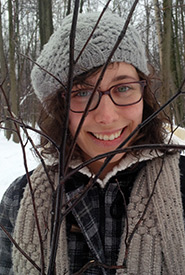A popular gathering for connectivity
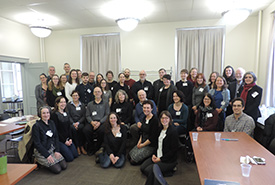
"Organizations and Municipalities: indispensable partnerships for connecting territories" workshop participants (Photo by NCC)
I’m a science communications intern with the Nature Conservancy of Canada’s (NCC’s) Quebec Region. Working out of the Montreal office, I promote our region’s science-related activities, especially connectivity. One of the first tasks I was assigned was to help promote the Organizations and Municipalities: indispensable partnerships for connecting territories workshop, which was organized as part of the project Ecological Corridors: an adaptation strategy to climate change.
The principal of connectivity is an important part of NCC’s work, and focuses on ecological corridors (on land or in water) and wildlife crossings that allow animals and plants to disperse from one habitat to another. As the effects of climate change on species’ habitat is causing them to be displaced farther north, animals and plants will need ecological corridors to get to their new habitats.
The Ecological Corridors project focuses on outreach and technical assistance to communities, decision-makers and private forest landowners to raise awareness of habitat connectivity and to put into place related land use planning and land management strategies. The vision of this project is to maintain a functional and resilient network of natural landscapes between protected areas that offer permeability and movement for species.
Related content
The workshop, organized in partnership with the Réseau de milieux naturels protégés (RMN), was designed to help conservation organizations approach municipalities, enhance service proposals and establish partnerships with them.
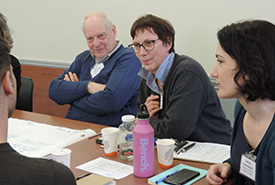
Bryan Osborne and Martine Bousquet (Fondation du Mont-Saint-Bruno) and Céline Fiammante (Réseau de milieux naturels protégés) (Photo by NCC)
It was targeted at a very specific audience. As it was held during the day on a Friday in early February in downtown Montreal, I was concerned that we might have trouble finding attendees. Sure, the event was free, it focused on a current conservation topic and it was a great networking opportunity. But participants would still need to give up a workday to attend. Also, many of the intended participants were located well outside the Montreal region.
Despite all this, not only did we not have trouble finding attendees, we actually became worried that the conference room wouldn’t be big enough to hold everyone. The room could only hold about 45 people, and as more people kept registering for the event, we couldn’t allow those who were not part of the intended audience to participate. Many conservation organizations from the Montérégie, Eastern Townships and Centre-du-Québec regions attended the workshop. We also invited a few municipal counsellors and officials, so attendees could learn from their points of view. Organizations outside of conservation, freelancers and students were also interested, but we had to tell them they couldn’t participate.
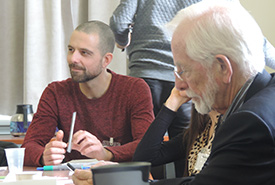
From left to right: Pierre-Alexandre Bourgeois (Société d’histoire naturelle de la Vallée du Saint-Laurent) and Grant MacKenzie (Sainte-Agathe-des-Monts City) (Photo by NCC)
The objective of the workshop was to strengthen ties between people who work in or are interested in conservation and connections between natural spaces. The event in itself was pretty exciting. Attendees were first invited to participate in small group discussions and treated to a conference put on by El-Hadi Hammouda, vice-president of development at Englobe Corp. They were then encouraged to present a service proposal to the rest of the group. Attendees were excited to participate!
Nature is beautiful, and field work is both inspiring and a literal breath of fresh air. But conservation work also happens in rooms and hallways. It is sometimes fueled by the connection we make with someone when nervously laughing at the prospect of presenting a fictitious service proposal to a group. Conservation is also about people clicking with each other, and people clicked that day to the point where some of them did not seem to want to stop talking. One table kept on discussing cases and ideas all through lunch and coffee breaks.
"We are called Action Peat! And we are interested in helping the city protect its major peat habitat for the four-toed salamander," said Andréanne Blais, an energetic animator at one table.
"Four-toed salamander? Does that really exist?’" asked another participant.
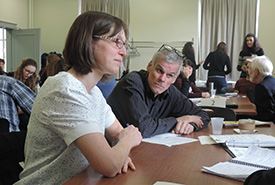
Andréanne Blais (CRECQ and Nature-Avenir) and Jean-Yves Laporte (Accès Nature-Laurentides) (Photo by NCC)
When Andréanne replied that it did, he learned something new about nature, and this perhaps deepened his enthusiasm for conservation.
It would have been nice if organizations outside of conservation, freelancers and students could have taken in all of this, if space had allowed for it. Note to self: the enthusiasm for conservation and connectivity is great. So great, that people who are not part of conservation organizations or are not municipal representatives wanted to attend a workshop. This can only mean one thing: we need to do more, maybe many more, of these workshops.

